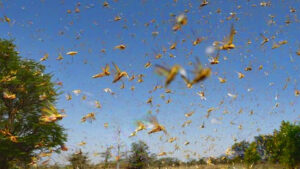 For the first time in over two centuries, Brood XIX and XIII cicadas are set to emerge simultaneously, creating a super-swamp that scientists predict will be over 1 trillion strong.
For the first time in over two centuries, Brood XIX and XIII cicadas are set to emerge simultaneously, creating a super-swamp that scientists predict will be over 1 trillion strong.
Periodical cicadas typically surface in 13 or 17-year cycles, with different broods appearing every five to six years in separate geographical areas. This year, however, is exceptional as Brood XIX and Brood XIII, two of the largest brood types, are not only adjacent but also slightly overlapping in their emergence zones.
Brood XIX, also known as The Great Southern Brood, emerges every 13 years and spans across the southeastern U.S., reaching as far north as Illinois. Here, it intersects with the 17-year cycle of Brood XIII. This remarkable event, last recorded during Thomas Jefferson’s presidency in 1803, marks the first time in 221 years that these broods will hatch in the same year.
While the mating calls of cicadas can be loud and persistent, these insects are harmless to humans, as they do not sting, bite, or carry toxins. The Environmental Protection Agency (EPA) highlights the ecological benefits of cicadas, noting they serve as a food source for birds and contribute to soil nutrition upon decomposition. However, they can pose a risk to young trees if female cicadas lay eggs in them. To safeguard trees, the EPA advises using mesh or netting with holes smaller than ¼-inch to cover them.


